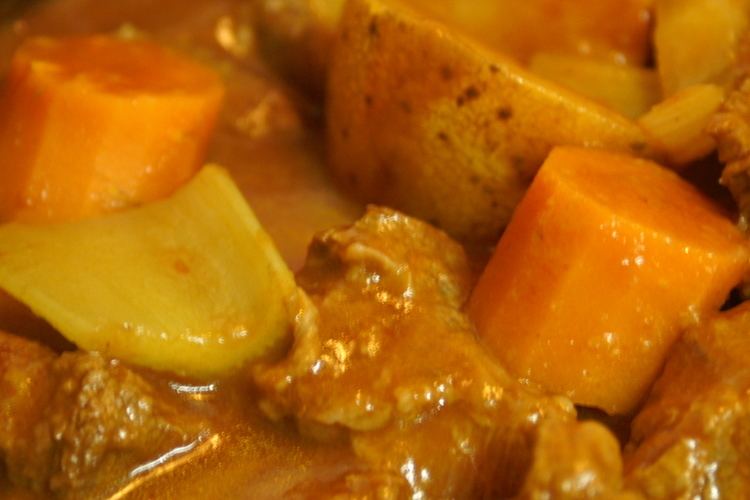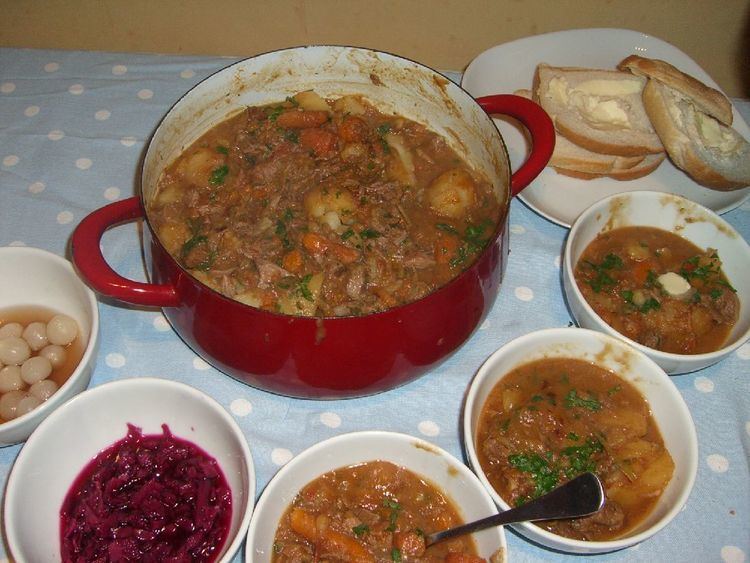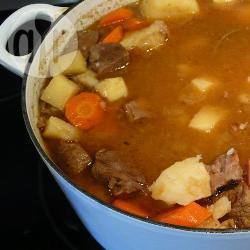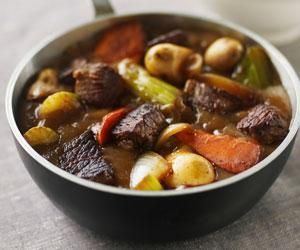Type Stew Main ingredients Lamb and mutton, Beef | Place of origin Norway; United Kingdom | |
 | ||
Similar Beef, Lamb and mutton, Labskaus, Lancashire hotpot, Bubble and squeak | ||
Scouse is a type of lamb or beef stew. The word comes from lobscouse, a stew commonly eaten by sailors throughout Northern Europe, which became popular in seaports such as Liverpool.
Contents

Origin of the term

The first known use of the term "lobscouse" is dated 1706, according to Webster's dictionary. Smollet refers to "lob's course" in 1750. The roots of the word are unknown, but there are at least three competing theories. It has been suggested that the dish is "almost certainly" of Baltic origin, and labs kauss in Latvian and labas kaušas in Lithuanian both mean "good ladleful". Similar dishes are traditional in countries around the North Sea, such as Norway (lapskaus), Sweden (lapskojs) and Denmark (skibberlabskovs, meaning "skipper's lobscouse"). Another theory posits a Low German origin from lappen (dewlap) and kaus (bowl). An English origin has also been proposed: through "lout’s course", via "lob’s course" to "lobscouse".
Recipe and variants

Nineteenth-century sailors made lobscouse by boiling salted meat, onions and pepper, with ship's biscuit used to thicken the dish. Modern English scouse resembles the Norwegian stew lapskaus, although it differs from the German labskaus which is similar to corned beef. Scouse is a stew, similar to Lancashire hotpot, usually of mutton, lamb (often neck) or beef with vegetables, typically potatoes, carrots and onions. It is commonly served with pickled beetroot or cabbage and bread.

Scouse is strongly associated with Liverpool, where it remains popular and is a staple of local pub and café menus, although recipes vary greatly and often include ingredients which are inconsistent with the thrifty roots of the dish. "Scouse" has become part of a genre of slang terms which refer to people by stereotypes of their dietary habits, e.g. Limey, Rosbif (for the English), Frogs (for the French) and Kraut (for Germans).
In St. Helens, the dish is often called "lobbies" and uses corned beef as the meat. In Wigan "lobbies" is often made using tinned stewing steak as the meat. A further variety of the dish is "blind Scouse", made without meat, although it would likely have used cheap "soup bones" for flavouring the broth (prior to WW2, such meat bones could be sold to bone dealers after being used and for the same price as originally purchased from the butcher). The dish is also popular in Leigh with local residents sometimes being referred to as 'Lobbygobblers'.
A variant lobscaws or lobsgaws is a traditional dish in North Wales, normally made with braising or stewing steak, potatoes, and any other vegetable available, or made with mutton it is known as cawl. The food was traditionally regarded as food for farmers and the working-class people of North Wales, but is now popular as a dish throughout Wales. The recipe was brought by the canal barges to Stoke-on-Trent, where it is called "lobby", the shortened version of "lobscouse".
